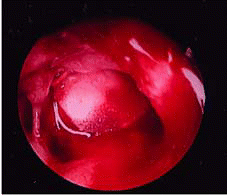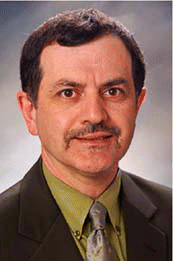Steep Learning Curve
The endoscopic approach is still a tough sell to otolaryngologists, he noted, primarily owing to some awkward logistics and to the time needed to master the procedure. It can be difficult to convince people who are used to conventional mastoid surgery to learn the endoscopic procedure, said Dr. Sajjadi. The learning curve is steep. It’s also a one-handed surgery. You have to hold the endoscope with one hand, while with the microscope, your hands are free.
Explore This Issue
May 2007Otolaryngologists who take on the challenge need to be prepared for longer procedures initially, Dr. Sajjadi said. They also need to shepherd the nursing staff through the transition and to train them to have the endoscopes on hand for second-look mastoid resections. However, this phase is transient, he stressed. After the learning curve is overcome and everyone is trained it may not be longer than conventional surgery, because there is less need for opening up the mastoid.

Endoscopic approaches can actually reduce the surgical time for many patients who have clear mastoids on endoscopy, thus avoiding the time needed to open and close the mastoid, he said.
Adjunctive Role
He also emphasized that the endoscopic approach is used only with second-look surgeries, and not with primary mastoidecomy. In that setting, though, the ability to inspect the original surgical site for residual disease, and the ability to eliminate the need for a repeat open procedure, means that endoscopic mastoid surgery performs a valuable role in the treatment of mastoid disease, he said.
Another expert agreed with Dr. Sajjadi about the adjunctive role of the endoscopic approach. Endoscopic mastoid surgery is really not separate from traditional mastoid surgery, said Thomas J. Haberkamp, MD, in a separate phone interview. It’s performed in the same manner as the conventional procedure, but the endoscope is an adjunct. During or after resection of the cholesteatoma, the endoscope is used to visualize the areas you can’t easily see, such as the sinus tympani and the anterior epitympanum. Dr. Haberkamp is Professor of Otolaryngology at Rush University Medical Center in Chicago and authored one of the key landmark articles describing endoscopic mastoid surgery.2
The initial procedure is typically performed with a drill and an endoscope is used to help remove residual diseased tissue, Dr. Haberkamp said. In addition, we can substitute endoscopes for traditional second-look surgery, in which we look for recurrent disease, he said. We use the endoscope to look into the middle ear with a small postauricular incision. We can also use the endoscopic approach to clean out a cholesterol granuloma and drain the cyst.

Leave a Reply